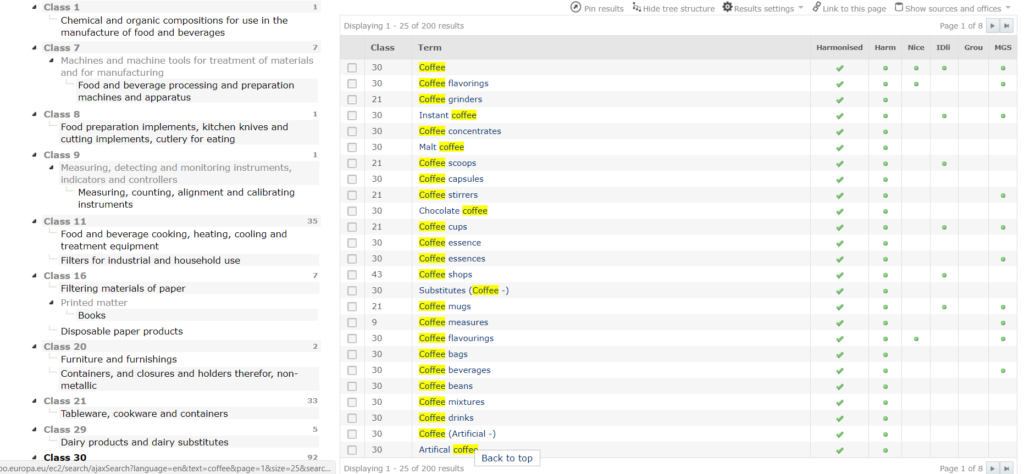Protecting your brand image
The difference between Copyright, Trademark & Registered Trademark symbol.
A common question we get from business owners with a new or existing logo, tagline or brand style usually goes along the lines of “Hey Mark, how do I copyright this new logo you’ve designed for me to stop other people stealing it?”.
The answer is straightforward and the process usually takes four months from start to finish assuming there are no complications and that you want it just for the UK.
Before we get stuck into the process of trademarking your brand image it’s worth taking some time to explain the difference in the terms.
What’s the difference between Copyright ©, Trademark ™ & Registered Trademark symbol ® ?
Copyright ©
The copyright symbol (the letter ‘c’ in a circle) is used to show that you are the originator of the content and that it is yours and must not be copied. You used to have to display the © mark in all places that you claim that the work is your original content and must not be copied. However, you do not have to display it now as the copyright is inferred unless you clearly state otherwise.
It does not form any legal basis of ownership in law and merely using it does not give you immediate right to take legal action against someone who may have copied your work.
You would need to seek legal advice if you wanted to challenge anyone.
What is should be used for;
- Photography
- Illustrations, drawings & paintings
- Images using original content
- Written content – articles, books, stories
What it should not be used for;
- Logos
- Symbols
- Phrases or words (product names or slogans)
It’s more of a common-law aspect in law but still if an infringement is found a penalty would be likely.
Trademark ™
It makes sense to now move on to the next correct step in protecting your brand image.
The Trademark symbol – the small ‘TM’ that’s often seen next to logos and taglines, is not a formally registered mark or symbol despite what you might think. Many brands across the world use the trademark symbol to infer that they are the owners and originators of the symbol, icon or phrase (usually it’s taglines and brand statements that the TM is applied to). What the ‘TM’ symbol says is that you intend to register (or are in the process of registering) the mark but that you claim to be the legitimate originator and owner of the logo, symbol or tagline and that, once awarded as an official mark will seek legal action against infringement.
Again, it’s more of a common-law legal right.
It’s a very clever and simple way for large brands to protect their brand icons and phrases without actually going through the legal process and expense of actually registering the mark formally. Imagine the cost and time to apply for the global trademark of all the taglines used by the big brands.
What you should use a Trademark symbol for
- A logo yet to be registered or in the process of
- A tagline that is part of the brand (e.g Nike’s ‘Just do it’)
- An icon or symbol
What you should not use a Trademark symbol for
- With your logo when it has been awarded a registered symbol
- On a tagline or marketing phrase that is very vague and general – ‘we’re the best ™’
- Content in a book, publication or on a website – this is protected by your claiming of copyright.
In some regions (mostly the US), there are also differences between a Trademark and a Servicemark and are distinguished by whether it’s a tangible product or a service provided that has a name. In most cases, when it comes to applying for them, the result is almost identical. For example, ‘McDonald’s’ is a servicemark as it’s for their restaurant service business, whereas ‘Mini Cooper’ is a trademark as it is the name of a tangible product.
Registered symbol ®
The ‘R’ in a circle symbol means that the logo, mark or symbol has been registered in at least one country as a registered mark and is the intellectual property of that owner. The owner of a registered mark has the rights to:
- Take legal action against someone using it without permission
- Sell the brand name and intellectual property rights
- Apply for the mark in other countries
The Registered symbol carries much more weight in terms of intellectual property ownership and right.
A Trademarking is global, isn’t it?
At this stage it’s worth talking about the countries in which your mark or brand image is protected.
“My logo is globally trademarked. ” Unlikely, unless your business is The Coca Cola Company and you want to protect the Coca-Cola brand.
There is a common misconception that if you have been awarded a trademark for your logo here in the UK, it is protected worldwide. It is not and does not have any legal standing in any other country. That’s not to say that you could bring infringement of copyright or passing off action against someone in another country who uses your logo but it is not the same as having a registered trademark for that country.
You need to apply for and get registered in each country you want to have the brand protected. If you apply for, and are awarded, a registered mark in the UK your brand image is protected only within the UK and nowhere else.
You must submit all registered trademarks to the UK Intellectual Property Office (the IPO).
You can visit their website and apply for a trademark here:
https://www.gov.uk/government/organisations/intellectual-property-office
The application form and fees can be found here:
https://www.gov.uk/government/publications/trade-mark-forms-and-fees/trade-mark-forms-and-fees
There is a reciprocal intellectual property office in each country (although some regions are grouped) and you must apply through the World Intellectual Property Organization (WIPO) for a trademark application in another country.
What does it cost to trademark my logo?
Typically, the IPO’s application fee for your logo to be trademarked here in the UK will cost you around £300 and you can do it without a solicitor. We, at Aubergine, apply for trademarks for our clients’ logos and brands all the time.
However, the price will vary according to how many ‘classes’ in which you want the mark to be registered. This means that you need to state the sector, industry, product or service type for which you are applying the logo to be registered. The phrase the IPO use is ‘state the goods and/or services you are using it on’. Typically, the IPO’s fee for each additional class is £50.
Example:
You are a coffee importer and are going to launch a range of ground coffee beans.
The brand name is ‘The Old Roasting House’ and we’ve designed you a new logo for it.
You would need to choose which ‘classes’ the logo needs to be applicable.
As you can see in the image below taken from the WIPO website search for ‘coffee’, there are quite a few classes that relate to supplying goods or services relating to coffee! However, in this instance, as the example is only supplying ground coffee to supermarkets the application needs to be just for Class 30.
So, the example would cost around £200 to have its logo protected in the UK in one class.

Something to think about
Let’s take Nike and their tagline ‘Just do it’. That’s a trademark has been around a long time, along with their famous ‘tick’ logo.
Only some parts of the branding are fully registered trademarks (with the ® symbol) and other parts don’t have it but have the ™ symbol – inferring ownership.
I doubt that anyone would ever challenge the legal might of Nike that ‘Just do it’ wasn’t theirs. But imagine the cost to apply for that trademark in every region in the world and in multiple goods and services classification that Nike sell their products and services. I suspect the lawyer’s fees alone are enough to make your eyes water.
Any reference to actual companies and brands is purely for the purpose of illustration and we make no claim of ownership of these or would ever knowingly wish to attempt to breach any copyright or intellectual property ownership in using these in our editorial article. If you are the owner of one of these brands and wish to contact us please do so by emailing: [email protected]
Like what you see? Get in touch
